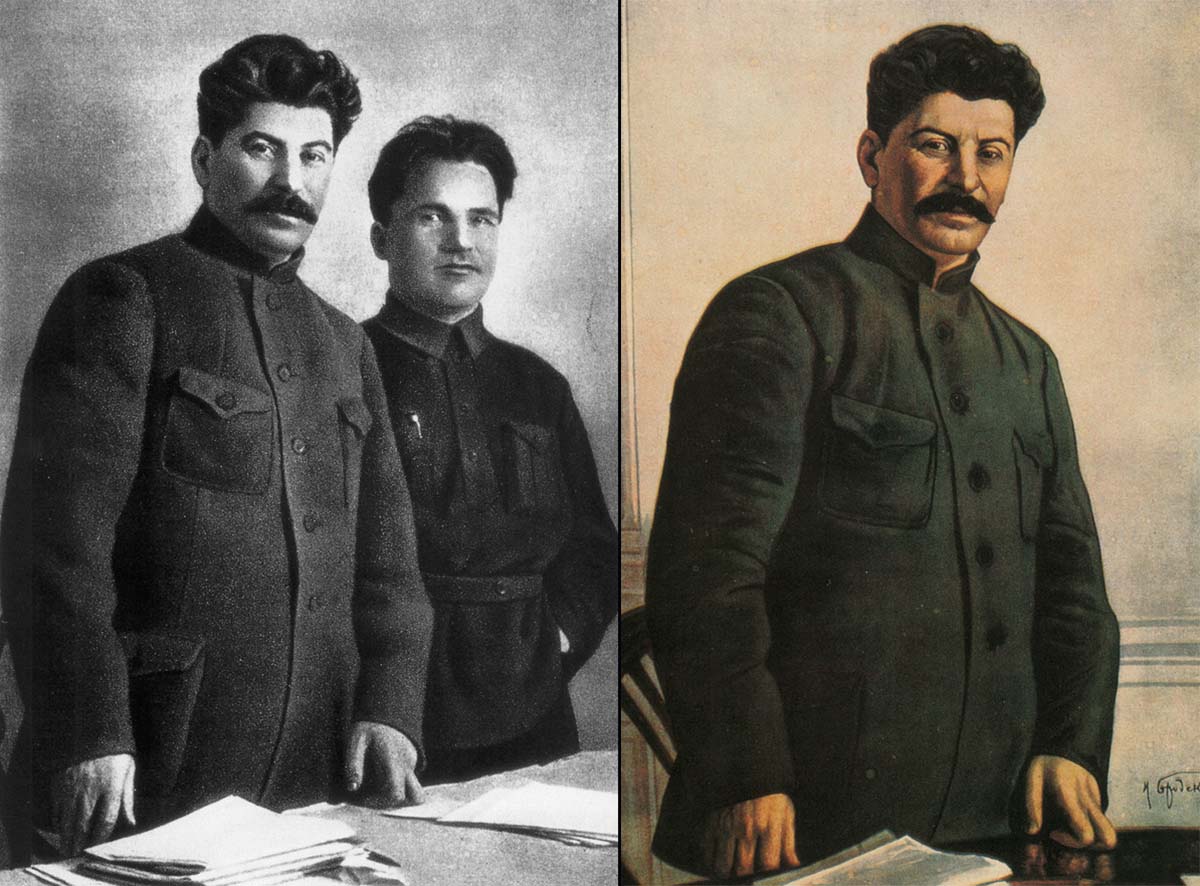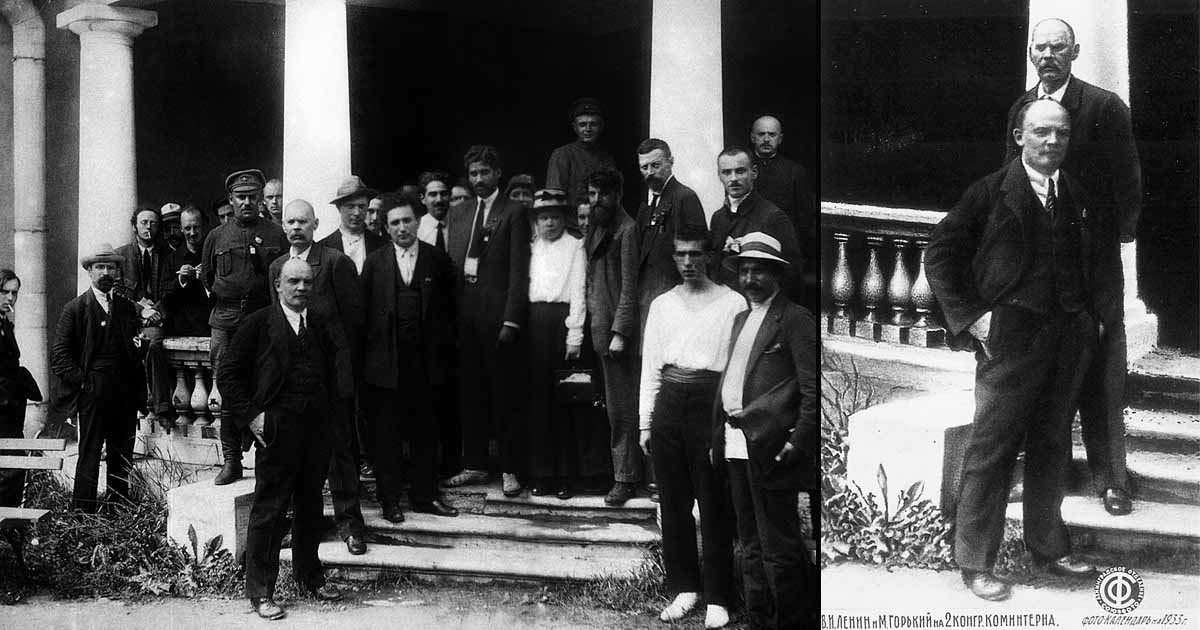
The original picture from 1924 doesn’t do a very good job at concealing Stalin’s pockmarked skin, the result of suffering from smallpox as a child. It comes as no surprise that a printed version of this photo, published in 1939, when Stalin was an almighty leader, was seriously retouched – as you can see, his skin is smooth, his hair and mustache silky.
Stalin didn’t have Photoshop, but that didn’t keep him from wiping the traces of his enemies from the history books. Using tools that now seem impossibly primitive, Soviet proto-Photoshoppers made “once-famous personalities vanish” and crafted photographs representing Stalin “as the only true friend, comrade, and successor to Lenin, the leader of the Bolshevik Revolution and founder of the USSR.”
One day a politician may have been in favor, the next he could be facing the firing squad as an enemy of the people. In the Soviet Union, people were literally written out of the history books by using photo manipulation techniques.
After he came to power in 1929, Stalin declared war on the Soviets he considered tainted by their connections to the political movements that had come before him.
Beginning in 1934 he wiped out an ever-changing group of political “enemies.” Some 750,000 people died during the Great Purge, as it is now known, and more than a million others were banished to remote areas to do hard labor in gulags.
During the purges, many of Stalin’s enemies simply vanished from their homes. Others were executed in public after show trials. And since Stalin knew the value of photographs in both the historical record and his use of mass media to influence the Soviet Union, they often disappeared from photos, too.
This quasi-artisanal work, one of the more enjoyable tasks for the art department of publishing houses during those times, demanded serious dexterity with the scalpel, glue, paint, and airbrush. In this manner, Stalin could order written out of history such comrades he ultimately deemed disloyal (and who usually wound up executed as).

Nikolai Yezhov, pictured right of Stalin, was later removed from this photograph at the Moscow Canal.
Sometimes, photo doctoring meant going back to the past to change the historical record, as when Stalin ordered Leon Trotsky, who helped create Communism, eliminated from all photos.
After Trotsky was exiled by Stalin for mounting a failed opposition to his leadership, the revolutionary was snipped, airbrushed, and covered up in countless photographs.
Sometimes, Stalin inserted himself in photos at key moments in history or had photo technicians make him look taller or more handsome. Here in this article, we have compiled a photo collection with such examples.

This picture was taken in 1926 and portrays Stalin with party bosses Nikolai Antipov, Sergey Kirov, and Nikolai Shvernik (from left to right). One by one, all except Stalin disappeared from the picture.

After all the photo manipulations done through the years, Stalin stands alone.

This historic picture showed young socialists in 1897 before some of them rose to power. You’ll recognize a young Vladimir Lenin (in the middle) – of course, he kept his place. Alexander Malchenko (standing, on the left) was not so lucky: in 1930 he was accused of being a spy, executed, and replaced with a white spot.

Here’s another case of embellishing a picture with extra details. Lenin was speaking to a crowd in 1920 but four years later, before publishing the image, the editors decided to make his audience bigger – so they used a larger crowd from another photo.

Lenin, who was turned into a kind of a Socialist saint after dying in 1924, remained a constant in all photos. But those who surrounded him were often not so fortunate. This group photo from 1920 contained so many “people’s enemies” (Grigory Zinoviev, Nikolai Bukharin, Karl Radek – all shot in the 1930s) that the authorities cut it down to just Lenin and proletariat writer Maxim Gorky (behind Lenin, with the mustache).

In this photo from 1920, Trotsky, in a cap, stands nearby Lenin who is giving a speech from a tribune. In the later version, Trotsky is nowhere to be seen. Trotsky was exiled from the USSR in 1929 but he continued his political struggle against Stalin from abroad, before being assassinated by the Georgian’s henchman in 1940.

Airbrushing Soviet history was sometimes about adding aspects, not just deleting them. For instance, this picture from a 1917 demonstration was not considered revolutionary enough by the powers that be: the shop sign on the left says “Clocks. Gold and silver” and the text on a flag is unreadable. But hey presto, a little bit of Bolshevik magic later and the sign reads “You’ll take what’s yours through struggle” and the flag – “Down with the monarchy!”

The famous photo of Soviet soldiers over Reichstag during the Battle of Berlin, which was later revealed to be staged and altered. Here’s an article about this picture.
(Photo credit: AP / Russian Archives / Russia Beyond).